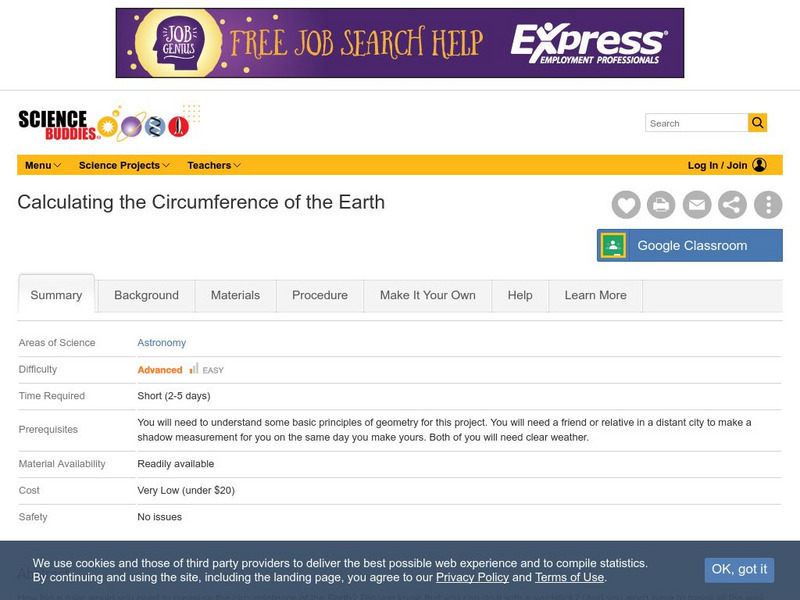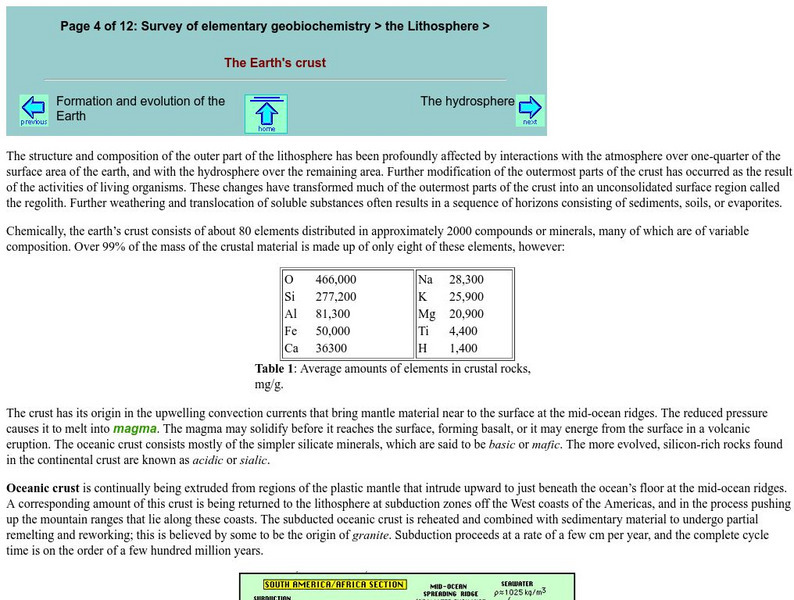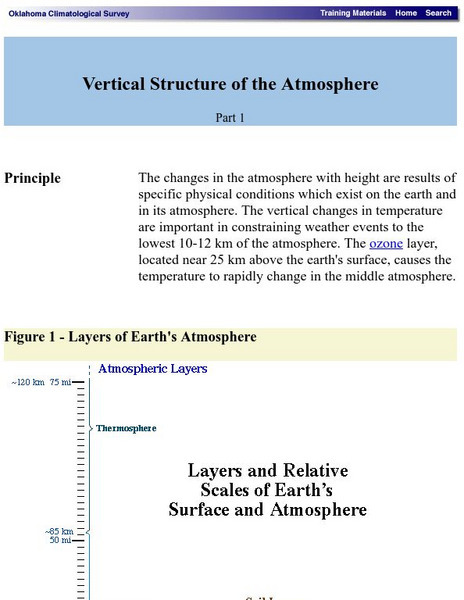Curated OER
TE Activity: Nidy-Gridy
Students make a grid and coordinate system map of their classroom as they investigate why it is important to have a common map making system. They look at how landmarks are used for navigating an area.
Curated OER
Earth
First graders define what a planet is and study the planet earth. They examine the effects of the sun on the earth and make a model.
Curated OER
Wow, Saturn Is Much Bigger Than Earth!
Learners compare and contrast the sizes of Earth and Saturn. They create scale illustrations of each planet and label them. They share their models with the class.
Curated OER
Scale Model of the Earth
Students work together to create a model of the Earth. They label and identify each layer and describing its properties. They discover how engineers use models to test different concepts.
Curated OER
Earth/Globe (poles & equator)
First graders create his/her own paper mache earth and label the poles and equator. The land masses can be added and labeling of specific bodies of water. The paper mache earth can then be used to discuss the sun, moon, and the earth and...
Curated OER
How Can a Spacecraft Always Face the Sun?
Students determine the correct orbital path for a satellite that collects data about the sun so that its view of the sun never be obstructed by the Earth.
Curated OER
How Far Away is SOHO?
Learners create a scale model of the Earth and the sun that demonstrates where the SOHO satellite is in relation to the Earth.
Curated OER
May Earth be Revolving around the Sun?
Ninth graders explore how Aristarchus used the position of the half-full Moon to estimate the distance to the Sun, and how he made a great error, but still figured out that the Sun is much larger than Earth.
Curated OER
Changing Ways
Third graders examine hard boiled eggs as possible models for the earth's layers.
Curated OER
Spaceship Earth
Students consider the earth and its problems as a system. They examine the fragility of that system when population, pollution, 1st world verse 3rd world, terrorism, etc., are considered as interactive parts of a spaceship earth.
Curated OER
The Planet Earth
Learners explore the planet Earth, outer space, and Earth's axis. They demonstrate reading comprehension skills, including literal meaning, inference and critical analysis.
Curated OER
The Differences Between the Earth and the Moon
Fifth graders identify the physical characteristics of the Earth and compare them to the physical characteristics of the moon. They produce a chart with Microsoft Excel to record the physical characteristics of both the Earth and the moon.
Curated OER
A Thin Slice of Soil
Young scholars examine the importance of soil in the production of what we eat and wear, and analyze the percentages of the earth used for food production. They create their own Pyramids of Life, and construct Dirt Babies out of hosiery,...
University of Iowa
University of Iowa: Small Comets
This site provides extensive information on the controversial theory that there are millions of small comets which continually burn up yearly in the earth's atmosphere.
Science Buddies
Science Buddies: Calculating the Circumference of the Earth
In this project, you will estimate the circumference of the earth, using a method developed about 2,200 years ago, by Eratosthenes, a Greek mathematician and the librarian of the great library at Alexandria, in Egypt.
Science Buddies
Science Buddies: Pop Goes the Geyser!
Our home, Earth, is a living planet. Earthquakes and volcanic eruptions are proof that the geological forces that shaped our planet and created the land masses are ongoing. An amazing example of geologic activity that is less damaging is...
Science Education Resource Center at Carleton College
Serc: Investigating Rotation: Why Is There Day and Night?
For this rotation activity, young scholars investigate what causes day and night by participating in a classroom activity. Students will observe, question, and investigate how the relationship between the earth and sun causes day and night.
Science Education Resource Center at Carleton College
Serc: Tracking the Sun: Observing the Path of the Sun Throughout the Year
Over the course of the school year, students collect weekly data about the sun's position at a specific time of day, resulting in creating a figure "8" that shows the path of the sun called an analemma.
Simon Fraser University
Chem1 Virtual Textbook: The Earth's Crust
As part of the General Chemistry Virtual Textbook, this site examines a variety of topics related to the Earth, and specifically the Earth's crust. Other topics covered include chemistry of the crust, composition of rock, distribution of...
Simon Fraser University
Chem1 Virtual Textbook: Structure and Composition of the Atmosphere
As part of the General Chemistry Virtual Textbook, this site examines a variety of topics related to Earth's atmosphere. Topics covered in the overview include structure of the atmosphere, composition of the atmosphere, energy balance of...
University of Hawai'i
Reply to Ask an Earth Scientist
This site contains facts about the New Madrid fault and the 1811-12 earthquake in Q & A form.
Harvard University
Harvard University: The Solar System
These hands-on activities are a great way for students to gain perspective on the relative sizes and distances of each planet, the relationship between the sun and Earth, and much more.
Oklahoma Mesonet
Oklahoma Climatological Survey: Vertical Structure of the Atmosphere
This two-part resource explores the vertical structure of Earth's atmosphere. Content details the atmospheric layers, and the relationship between pressure and height in the atmosphere.

























